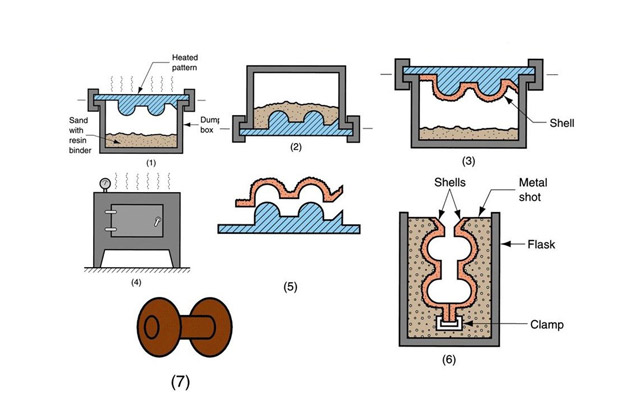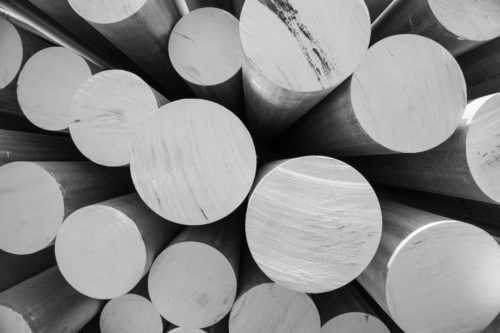6 Easy Facts About Stahl Specialty Company Described
6 Easy Facts About Stahl Specialty Company Described
Blog Article
4 Easy Facts About Stahl Specialty Company Described
Table of ContentsA Biased View of Stahl Specialty CompanyTop Guidelines Of Stahl Specialty CompanyExcitement About Stahl Specialty CompanySome Known Incorrect Statements About Stahl Specialty Company Getting The Stahl Specialty Company To Work4 Easy Facts About Stahl Specialty Company Explained

If you're designing a metal item, you've likely thought about utilizing aluminum as the base material. It has a high strength-to-weight ratio, excellent rust resistance, excellent formability, and aesthetic allure. These factors have resulted in its raised popularity in current years. Pure light weight aluminum has limited applications, so it is often integrated with other components, such as silicon, magnesium, and manganese to develop alloys.
Different elements and amounts generate a wide range of desirable physical and chemical buildings. And the Light weight aluminum Association (AA), based in The United States and copyright, has produced specifications that regulate light weight aluminum alloys' structure, homes, and language. There are two kinds of light weight aluminum alloys wrought and cast. Factory workers develop these alloy enters different means, which significantly affects their attributes.
5 Easy Facts About Stahl Specialty Company Described
Cast light weight aluminum alloys are made by melting pure aluminum and integrating it with various other steels while in fluid kind. The mix is poured into a sand, die, or investment mold and mildew. After solidification, the metal is gotten rid of from its mold. At this phase, it remains in either its final type or as a billet or ingot for additional handling.

The 4th number, which comes after the decimal point, specifies if the alloy is a casting (xxx. Wrought aluminum alloys likewise begin by incorporating molten light weight aluminum with various other steels. In contrast to cast alloys, nonetheless, they are created right into their last form via procedures such as extrusion, rolling, and flexing after the steel has actually strengthened right into billets or ingots.
There are many small differences between functioned and cast light weight aluminum alloys, such as that actors alloys can have much more significant quantities of other steels than functioned alloys. However the most noteworthy difference in between these alloys is the fabrication process where they will most likely to provide the final item. Besides some surface therapies, cast alloys will exit their mold in practically the specific solid type preferred, whereas functioned alloys will certainly go through a number of adjustments while in their strong state.
If you assume that a wrought alloy may be the most effective for your task, take an appearance at a few of our posts that describe more concerning particular functioned alloys, such as Alloy 6061 and Alloy 6063. On the other hand, if you believe a cast alloy would certainly be better for you, you can find out more about some cast alloys in our Alloy 380 and Alloy 383 short articles (coming soon).
Stahl Specialty Company Fundamentals Explained
When selecting a light weight aluminum shop for your production requirements, it's important to research several aspects. Among the most vital facets to think about is the experience and skills of the factory. Foundry. Picking a shop that has the appropriate knowledge of the light weight aluminum casting procedure, and the profile to reveal for it, assists to have an effective outcome for your task
Having the experience and industry knowledge to craft your castings for optimal manufacturing and high quality results will certainly improve the project. Producing light weight aluminum spreading requires a facility set of processes to attain the appropriate outcomes. When selecting a brand-new aluminum shop to companion with, guarantee they have considerable market experience and are experienced concerning all facets of the aluminum casting procedure: layout, production, material analysis, and item testing.
The foundry ought to also have a tested performance history of delivering exceptional products that meet or surpass client expectations. Quality assurance ought to also be at the top of your list when picking an aluminum foundry. By functioning with a certified foundry who adheres to the requirements for quality assurance, you can safeguard the integrity of your item and guarantee it meets your requirements.
By choosing a business who provides solutions that satisfy or exceed your item needs, you can be sure that your project will certainly be finished with the utmost precision and effectiveness. Various components require different production strategies to cast light weight aluminum, such as sand casting or pass away casting.
Stahl Specialty Company for Beginners
Die spreading is the name offered to the process of developing intricate steel parts through usage of mold and mildews of the element, additionally known as passes away. It generates more parts than any other process, with a this high level of accuracy and repeatability. There are three sub-processes that fall under the classification of die spreading: gravity pass away casting (or irreversible mold casting), low-pressure die spreading and high-pressure die casting.
No matter the sub-process, the die casting process can be broken down into six steps. After the purity of the alloy is examined, passes away are created. To prepare the needs spreading, it is crucial that the dies are tidy, so that no residue from previous manufacturings continue to be. After cleansing, the ejection lubrication is applied to the die to make certain a smooth launch.
More About Stahl Specialty Company
The pure steel, also called ingot, is contributed to the heater and maintained the molten temperature level of the metal, which is then transferred to the shot chamber and injected into the die. The pressure is then kept as the steel solidifies. When the metal solidifies, the cooling procedure starts.
(https://linktr.ee/stahlspecialc)
The thicker the wall surface of the part, the longer the cooling time as a result of the amount of interior steel that likewise needs to cool down. After the component is fully cooled down, the die halves open and an ejection system pushes the part out. Adhering to the ejection, the die is closed for the next shot cycle.
The flash is the additional product that is cast throughout the procedure. Deburring eliminates the smaller sized items, called burrs, after the trimming process.
Not known Details About Stahl Specialty Company

Zinc is one of the most pre-owned alloys for die casting due to its lower expense of raw materials. Its rust resistance additionally permits the parts to be lengthy long-term, and it is one of the more castable alloys due to its lower melting point.
As mentioned, this alloy is one of the most typically used, yet manufactures will, at times, choose aluminum over zinc due to aluminum's production benefits. Light weight aluminum is very cost-effective and one of the a lot more flexible alloys. Light weight aluminum is utilized for a number of various items and markets anything from window frames to aerospace materials.
Report this page